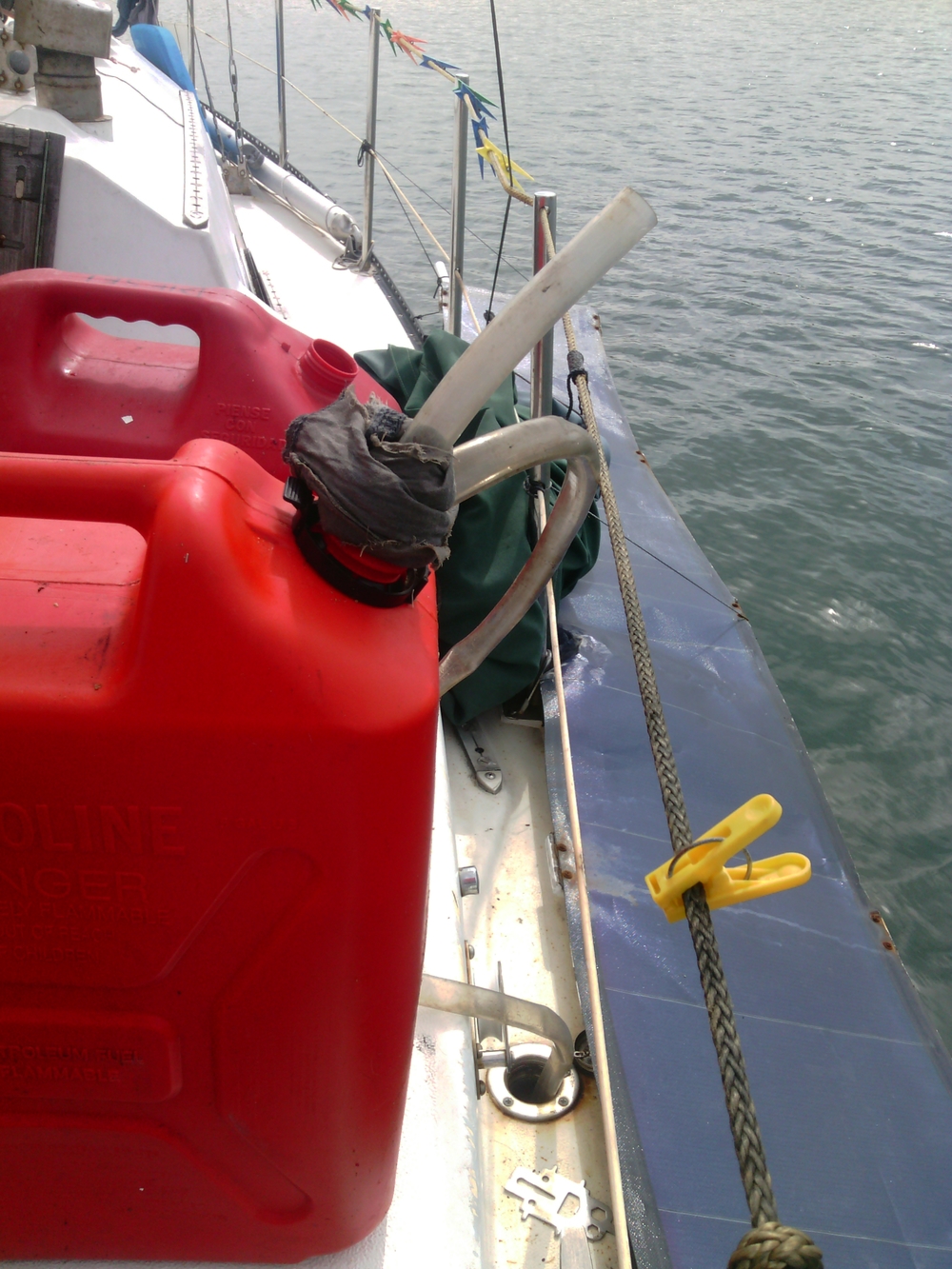
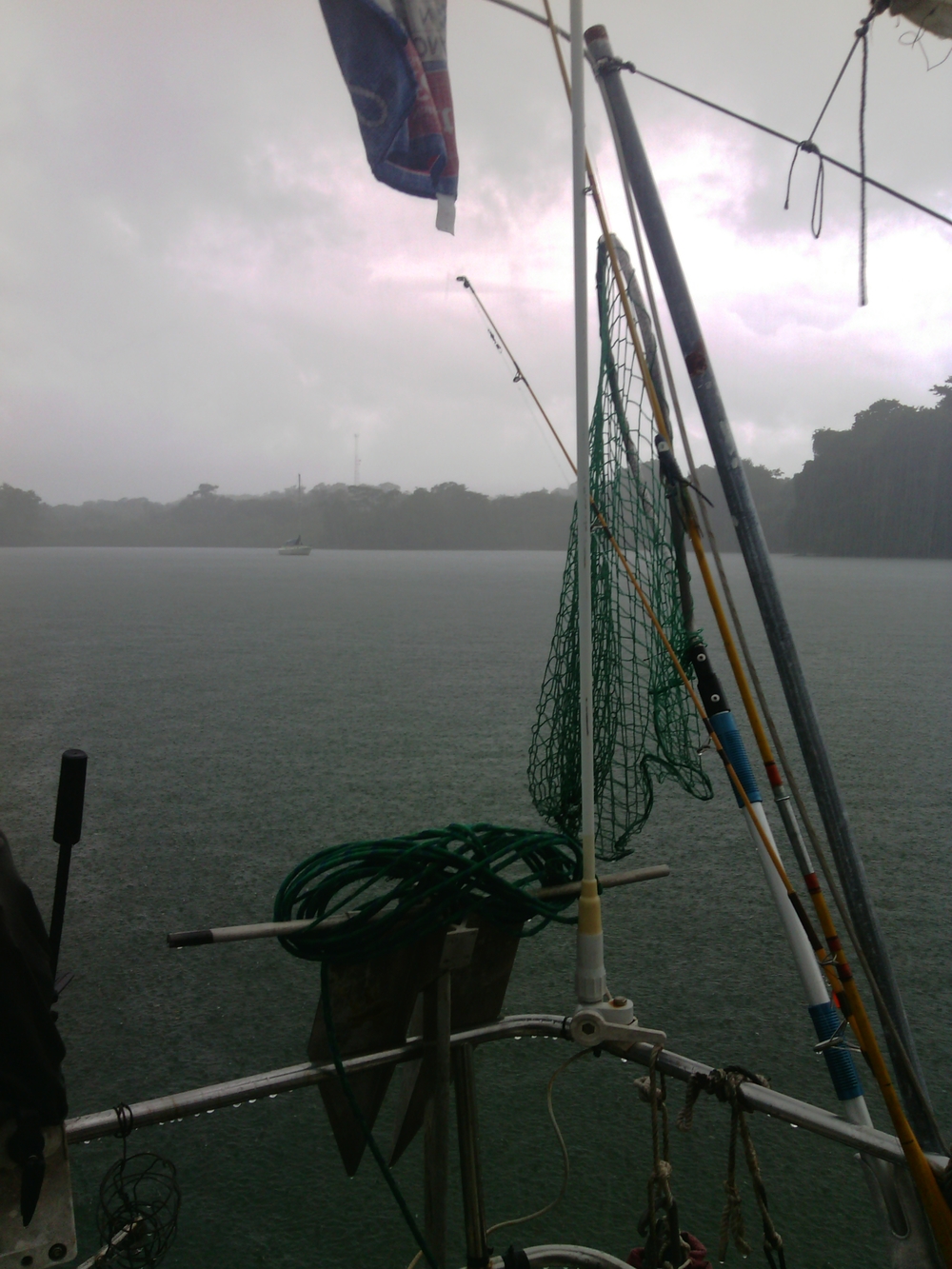
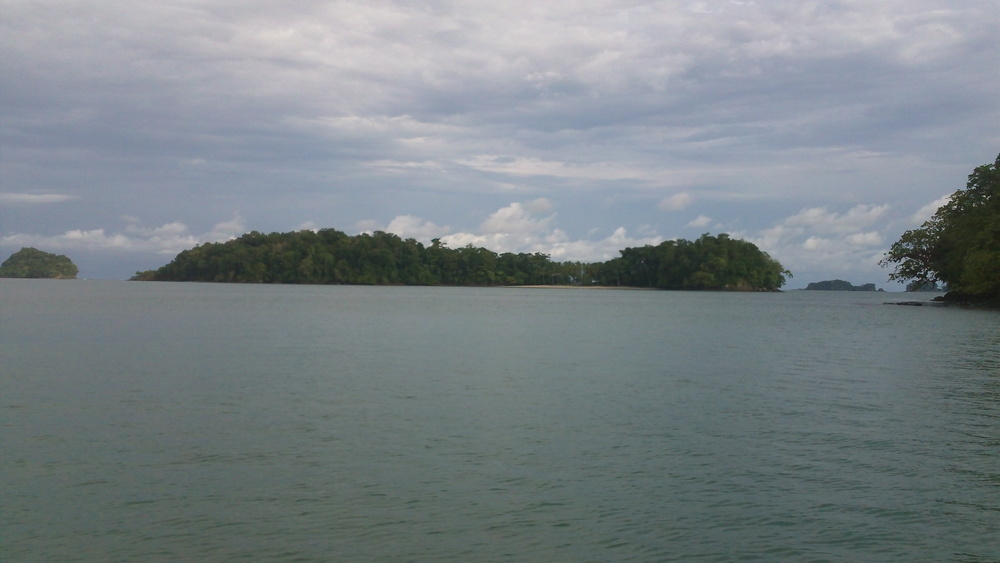
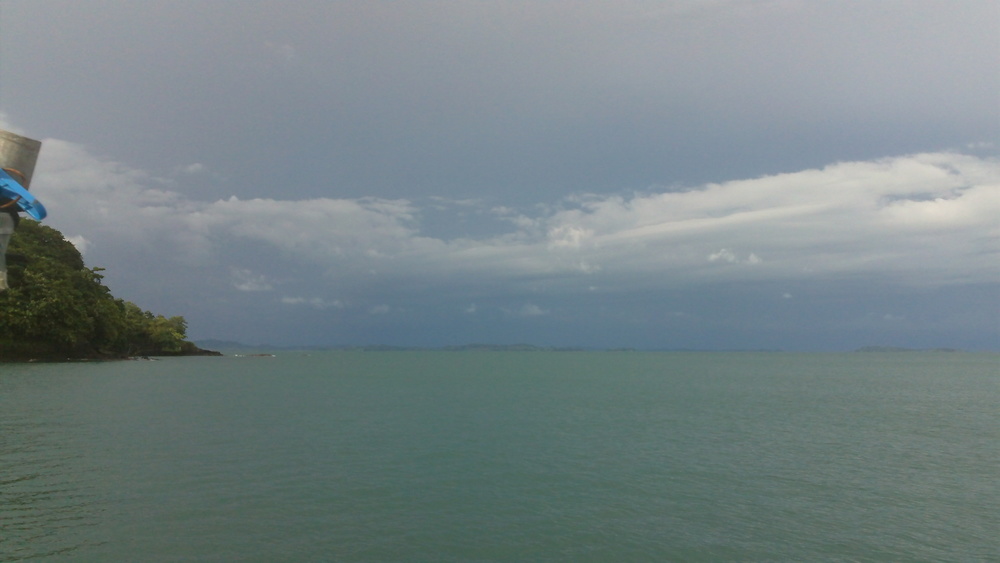

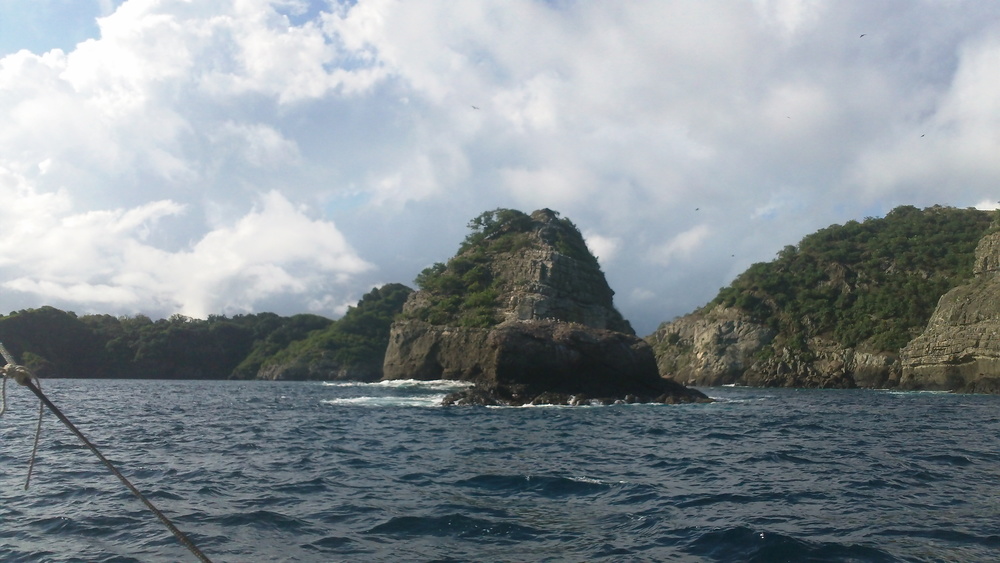
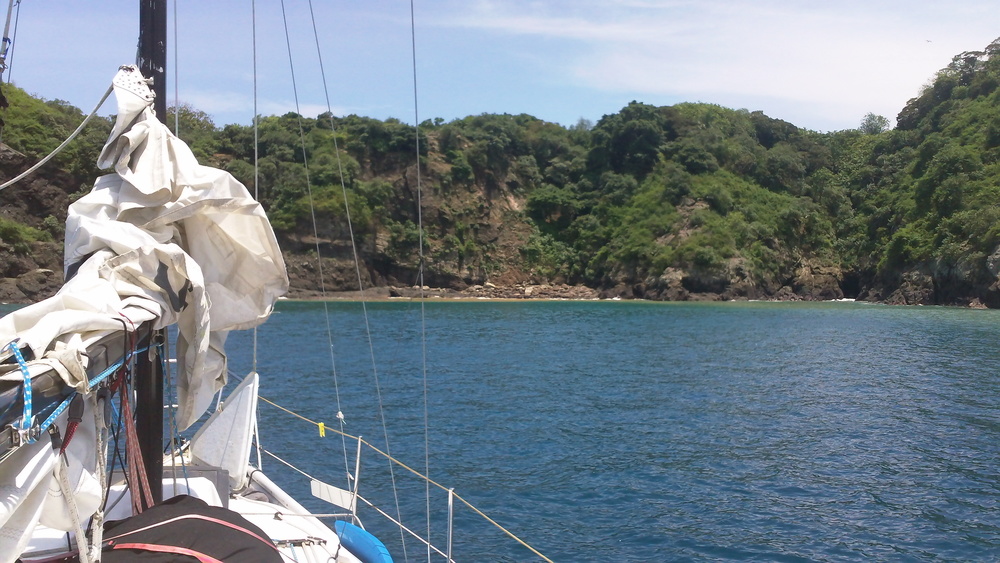
Fits and Starts
Harmony left on Monday, and I intended to raise anchor on Tuesday. Today was Friday. Such it is with trying to leave on boats.
On the morning I was set to leave Boca Chica, I went to secure the loose articles on deck and was struck dumb. It seems some idiot forgot to screw down the cap for the diesel deck fill on our main fuel tank (the one we put back into commission last year in Chiapas) before leaving the boat for two days to take Harmony to the bus. It rained hard both days. Our side decks have proven to be excellent rain catchers.
Son of a motherless —
I took everything out of the gear locker to remove the long fill hose and access the inspection pipe on the tank. The total capacity of the tank is 35 gallons. By my calculations, there ought to have been 12 gallons of diesel in there. The tank was full to just shy of the brim. There were 23 gallons of water sitting in the bottom of this tank. Oh bother. I struggled to divine the full meaning of these mathematics: I had no engine and a big problem.
I put together a multi-stage siphon and fuel filtering system using our two empty jerry jugs, a clear juice container, our little Jabsco hand pump, filtered funnels, diesel absorbent diapers, and finally a veterinary syringe. For three solid days I siphoned, filtered, transferred, let settle, then siphoned again. Because oil and water repel each other so well, I was able to pull fresh, clear water for 90% of the job, with the remaining 10% taking the lion’s share of the hours and care. I suctioned the tank until I consistently pulled up pure fuel, and in the end I was left with one of the remaining jerry jugs still containing a mixture that was too close to call. I can carry it onboard until the next time I visit the used gas and oil recycling tank at the marina in town. It was painstaking and consuming, but it needed to be done.
Today, Friday, I had coffee ready and rose anchor around 9:00. By my figuring, I still had another hour or two to make it over the shallow bar in my preferred passageway leaving Boca Chica, which gets down to about 6-8 feet at low tide and has rocks on either side. Just as I was leaving the bay and about to get to the bar, the engine died a quiet death.
I knew it immediately: water in the injectors. My fuel polishing wasn’t as successful as I thought. I wondered if this was going to happen. I ran up to the foredeck and dropped the anchor, which I’d left out and ready. Rolling waves broke over the sandbar just ahead of me and washed past the bow with a low hump. It’s fortunate the engine didn’t die 30 seconds later. I spent two hours bleeding the last of the water out of the engine with the little thumb fuel pump on the engien itself. There was water all right, but not much. I pumped and bled until the fuel/water separator on the main tank’s fuel filter showed only amber liquid. After some minimal protest to clear its throat, the engine fired up and roared steadily. Good to go.
I checked the clock: two hours until low tide. I could either chance it or wait for late afternoon for another shot, by which time the rain would no doubt arrive. I decided to make a run for it. The depth gauge showed a minimum of 3 feet of water beneath the keel), and out I squeaked past the semi-submerged rocks.
The breeze was light and steady, so as soon as I got out of the Boca Chica channel I raised the mainsail and genoa and made for Isla Gamez a short and sweet three hours away. The sails filled from the side with ease and expressed a light push on the tiller. The sky was blue and scudded with occasional packs of nimbus clouds. The sun, as always, was too powerful to look upon but cheerful from the vantage of shade. The water in the 8 miles between Boca Chica and Gamez doesn’t get deeper than 40 feet, and today it was blue-green and ruffled by the breeze. All in all a great day for sailing.
Along the way, I discovered that my path was blocked by a half-mile long net suspended between two black-flagged buoys. The nearest flag was just off to my right, and a local fishing boat bobbed next to it. I altered course to buzz the work boat, and from hammocks in the shade three men sat up and waved. We each turned down our radios and had a short exchange of pleasantries as I slid past, then boat and net receded behind me.
When I reached Gamez, I set the anchor near the beach, let it catch, then doused the sails as the boat spun around and went below for lunch and a nap. If I was lucky, this wouldn’t be the end of the day. Thick tall clouds had been stacking up on land waiting for the wall of pressure to drop at sunset and admit them escape to sea. As a result, the hours between 4 and 7 are generally the worst for sailing in this part of Central America during the rainy season, with sunset at 6:30 year-round. After the rain blew past, a clear and consistent breeze usually followed through the night, and I intended to capitalize on this and make more miles before morning.
I woke up around five o’clock and came up on deck to discover that the clouds had dematerialized mysteriously. I could see the volcano clearly, a rare sight, and the setting sun lit the trees on the island with fire. Nobody else was around, but with the weekend coming and the popularity of this island among locals, tourists, and even the Panamanian navy (for good reason), it wouldn’t stay that way. Out of the west still blew a light steady breeze.
I gathered myself for round two. Isla Montuosa, my destination, was another forty miles hence, straight out to sea. I hauled the anchor and let the boat drift out of the bay (almost scraping some trees in the process but we won’t dwell on that), then raised sails and crawled between the exposed rocks and islets in the island group of which Gamez is a member, finally hitting open sea well after nightfall. A thin crescent moon cast a weak yellow glow behind a veil of clouds and set before 10pm. It was just me and the stars. So many stars.
I spent the night in reverie punctuated by occasional sail adjustments and wary tracking of the black masses of cloud creeping along behind me in the dark. Once every five minutes or so, a flash glowed over my shoulder far away and lit the cockpit briefly. The wind freshened a bit and the ocean got taller, but nothing the Doc couldn’t handle. These clouds were beginning to worry me though. It was after 2am, and the individual strings of heavier low clouds had begun to collect and grow larger. A thick snake of dark cloud to my left stretched from the mainland far out to sea and began to sweep almost imperceptibly in my direction. The flashes increased in frequency, but they were still too far away to be heard. Montuosa was still 30 miles away.
Eight miles off to my right, a lone white light flashed from the lighthouse on another cluster of islands called Las Ladrones (the thieves). I looked up more information about them in my cruising guide and made an executive decision to change course and try to dodge this coming front. I hauled the sails closer to the wind, and the boat leaned over slightly in response. Tack, who had been snugly tucked in the laundry bag, came out to investigate, then returned inside uninterested.
I sailed dead for the Ladrones, and when I got about two miles away the lightning in the storm snake off to my side suddenly got active. Flash. Ten seconds. Deep, loud thunder boomed through my chest like the voice of a god. Two miles away. Less than a minute later it happened again. Still blanketed in the dead of night, I could just barely make out the outlines of the islands in front of me. Every time the lightning flashed, they lit up white and green, and I adjusted course as necessary. I rounded the north side of the island around 5am and found the bay described in the guide, but what the guide didn’t say was that the bay would be surrounded by high rock cliffs.
The lightning picked up the pace. Flash! Two seconds. BANG. The sound richocheted around the cliff face like a shotgun in your ear. Twenty seconds later, a flash went off again. My skin shivered from the vibration of the powerful sound. The storm was passing directly overhead. The rain came in pelts as I doused sails, kicked on the engine, and walked to the bow to drop my anchor in 30 feet. I was very careful not to touch any metal as I picked my way up and back in the rain, which it turns out is like playing the “Floor is Lava” except the handholds are also lava.
The sky was just beginning to lighten, but the storm still had another thunderous hour in it as I went below to collapse on the settee and let my exhaustion blot it out. I’d made less than 30 miles offshore. That was enough for one day.
Solo adventures…I love ’em! Nice job.